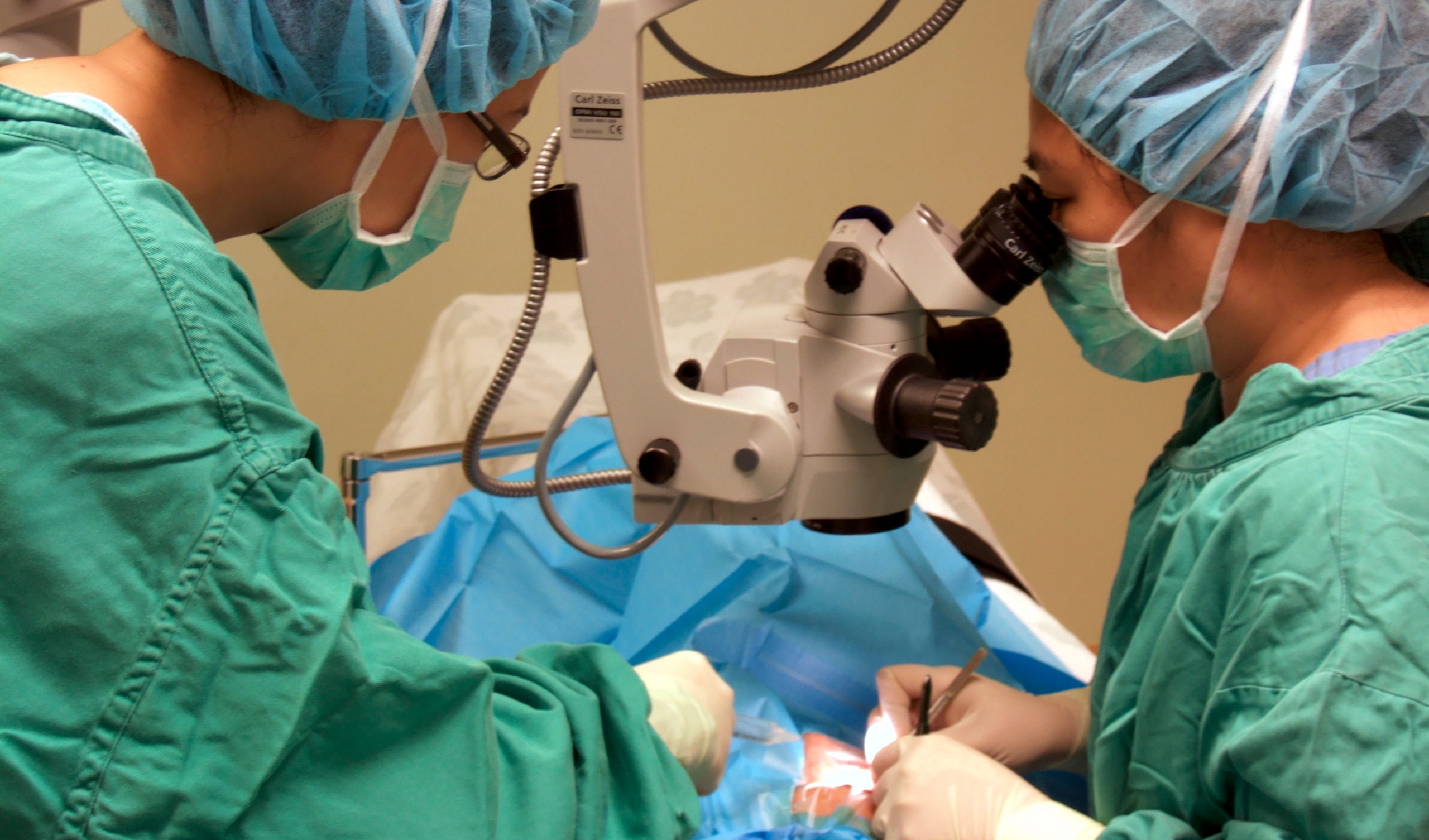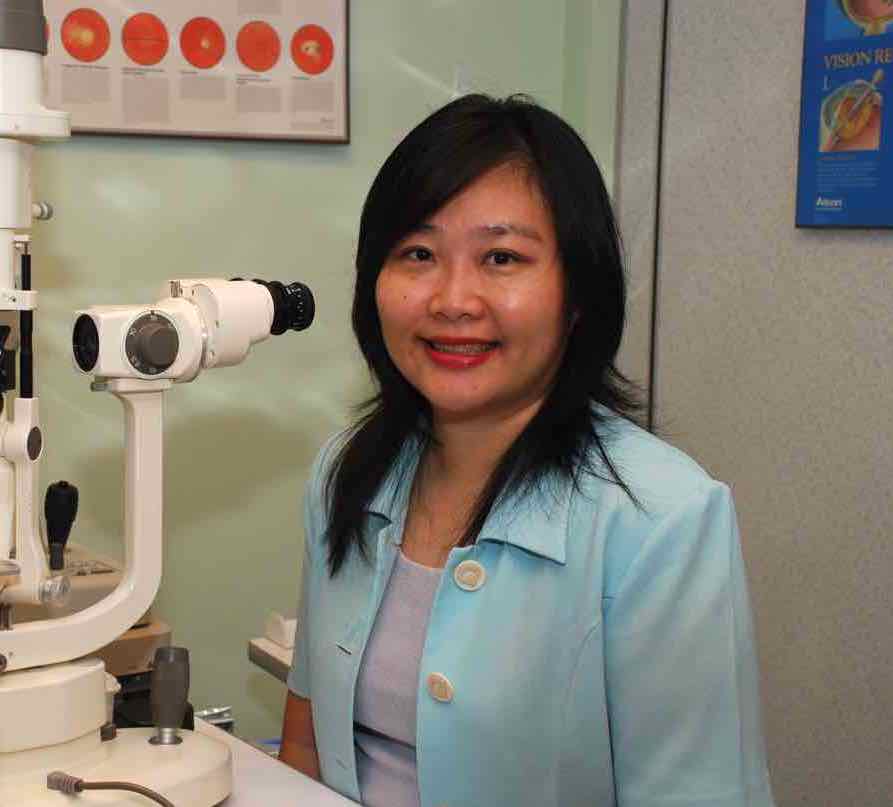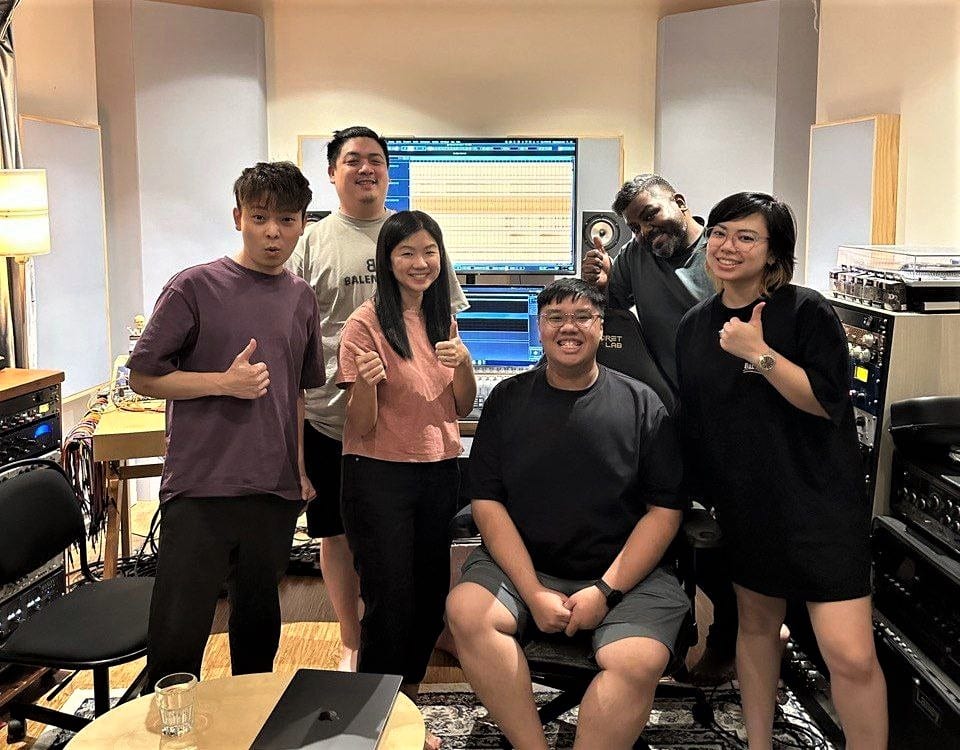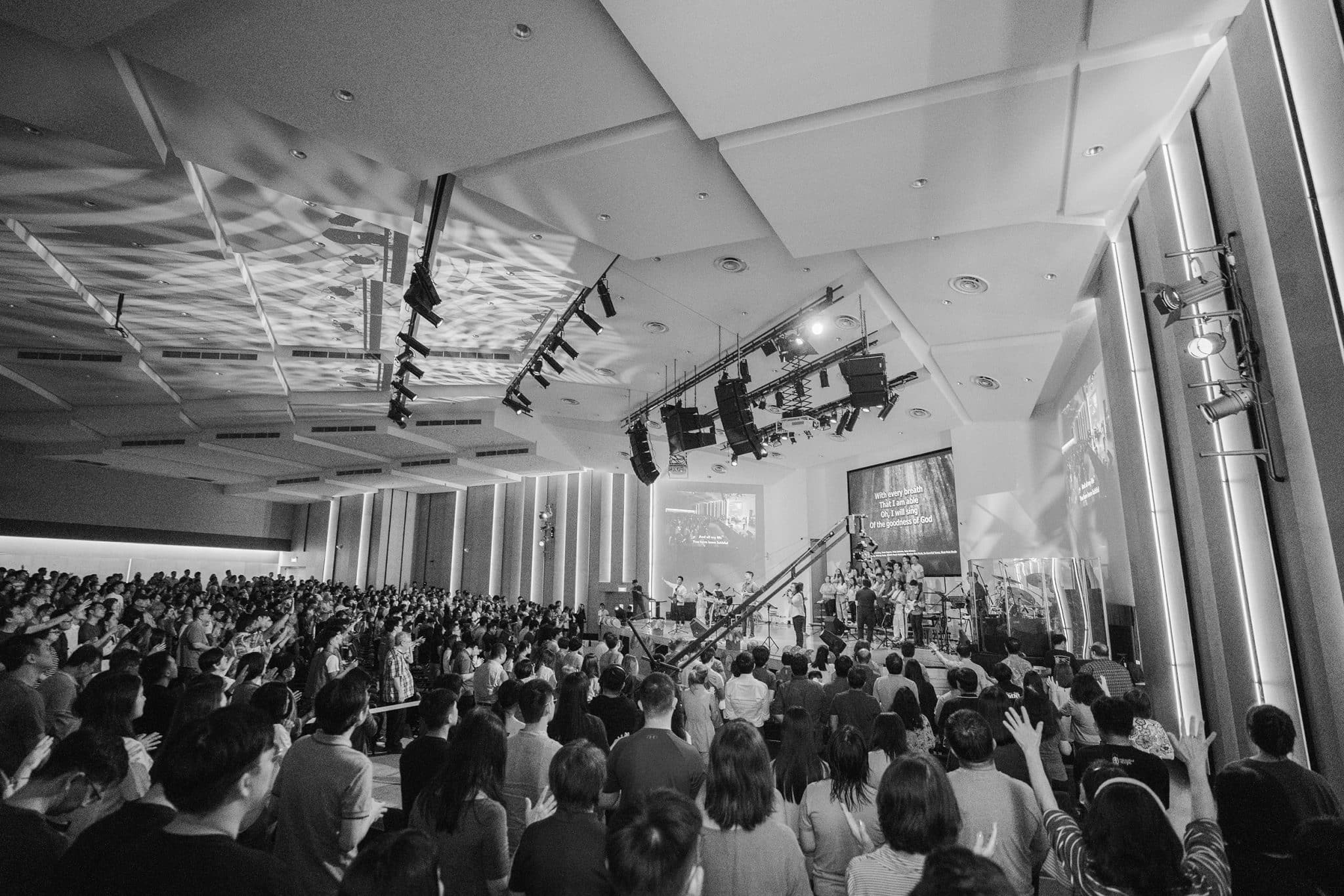What’s under the microscope? An eye doctor marvels at God’s design
Dr Ang Chin Sim // April 5, 2021, 2:40 pm

"Any basis for unity in our community does not find its strength in emphasizing our similarities but celebrating our diversity," notes ophthalmologist Dr Ang Chin Sim, who draws insight into the Christian life from her occupation as an eye doctor. Photo by Christopher Tan, courtesy of Dr Ang Chin Sim.
When people ask me why I chose to study medicine, various factors come to mind.
One memory I recall quite vividly, was the first time I peered into a microscope. I had cut a thin sliver of an onion and placed it under the microscope. Lo and behold, another world greeted me.
Brick-like, elongated cells with well-defined cell walls containing a nucleus that was large and circular looked simply amazing!
The wondrous sight is still etched in my memory till this day and the study of the human body still fascinates me.
Microscopic view
Many years later, I find myself still making use of microscopes. This time it’s mainly related to the human eye.
Ancient doctors, who did not have microscopes, treated cataracts by simply poking a sharp instrument directly into the eye to dislodge the lens.
The eye is a product of specialised cells, with the eyes taking up a mere 1% of the weight of the head. For eye examination (as it is a small organ), modern day ophthalmologists (eye doctors) are blessed to have microscopes, enabling detection of the slightest changes that occur in the human eye, even to the point of seeing a single cell floating gracefully in the liquid currents of the eye.
In contrast, ancient doctors could only see the eye from the front external structures. With what knowledge the ancients had, the treatment for cataracts was to simply poke a sharp instrument directly into the eye to dislodge the lens, without taking into account the possibility of infection or damaging other vital structures in the eye.
Since then, there have been tremendous advances in how modern day cataract surgery is performed.
A surgeon uses a sophisticated microscope that reveals the minute layers of the eye, taking care to work within a 2-3mm space so as to avoid damaging thin delicate structures that lie above and below the lens, kind of like dodging minefields in a delicate and precise manner. This is followed by implanting an intraocular lens for which many detailed calculations have been done to obtain the best fit power for the patient.
Sterility is deemed important too, to avoid tiny microscopic bacteria wreaking havoc post-operatively.
God, the master coder
Looking at cellular structures makes me appreciate how God made us so intricately and, more so, diversely.
Three billion letters of DNA contain instructions that, if printed in tiny font, would fill 300 books of 1,000 pages long.
He planned the function and design of each cell. How amazing that God chose to custom make each one of us and not make compliant factory robot creatures.
God is the Master Coder! He put our code in our DNA that tells each cell how it is to function.
Three billion letters of DNA contain instructions that, if printed in a tiny font, would fill 300 books of a thousand pages long.
Many different types of cells make up the human body – bone cells, fat cells, blood cells and muscle cells, to mention a few.
Even in the eye, there are many specialised cells.
When we look at something, we are viewing it with 127 million visual cells.
Rods and cones are lined up in rows, rods allowing us to see shades of grey, with cones giving us high definition resolution and filling our senses with more than a million unique colours.
The cornea has five layers, and each functions with a different purpose. The lens also contains different cells within its structure. The clear lens and cornea allow light transmission to hit the rods and cones from which electrical impulses fire messages into the brain, and voilà, we see!
What is so amazing is that it seems so effortless, all this coding and decoding, a myriad processes in microseconds. Yet we seem so unconscious of all this activity, done by the concerted action and reaction of diverse cells of our body.
Diversity for unity
Diversity of cells teaches us about larger organisations, for instance, families, groups, communities, nations.
The human body contains a zoo of cells, none of which resembles the gross appearance of the larger body.
In the same way the spiritual body of Christ comprises a mishmash of believers. Look at the different races of people, different personalities and quirks.
Individual cells amount to little but, when working in concert with other cells, the body is able to function in the tremendous way God created it to do.
As colours in a portrait may be beautiful as single colours, it’s the Artist’s arrangement of strokes of colours that contrast at times and in other times blend in complementary hues that provides the richness and texture of a complete work of art.
Any basis for unity in our community does not find its strength in emphasising our similarities but in celebrating our diversity. Then we can be knit and woven into an astounding, marvellously designed tapestry.
The body needs its diverse cells to function in order to thrive.
We need to learn that acting as an individual cell amounts to little but, when working in concert with other cells, the body is able to function in the tremendous way God created it to do.
Therefore acknowledging the value of every member in the body of Christ, and functioning as a whole body, diverse yet unified, is what God intended in His marvellous plan.
No single role
Surgical teamwork is an example of unity. To perform a surgical procedure that is well-executed, we need teamwork. There are those who prepare and sterilise the instruments, runners who scurry back and forth for needed instruments, surgical assistants and the surgeon.
Modern day thinking is often individualised, fighting for our own rights to be independent and comfortable.
Those who do the humble work of cleaning and packing away instruments are also very important in the chain of teamwork, all working to a common goal of caring for the patient.
When one link in the chain is broken, the whole surgery can be compromised.
I am privileged to experience excellent teamwork on a regular basis.
Recognising one another’s role in the ultimate goal to perform the best surgery possible, it becomes a smooth process where no single role is more important than another, but all roles are needed for the machinery to roll on smoothly.
Forfeiting autonomy
Modern day thinking is often individualised, fighting for our own rights to be independent and comfortable.
We are challenged as members in a spiritual Body to give up self-importance and to have a new born again DNA.
In a healthy church community we live in diversity under the roof of unity.
Being in a spiritual body with Christ as the head may involve sacrifice, but this opens up levels of personal fulfilment and gratification.
In the process of joining the body of Christ, each individual has to forfeit his or her own autonomy and have the ultimate goal of pleasing and obeying God. This enables us to work in synergy with others in the body to achieve God’s divine purpose in the entirety.
Being in a spiritual body with Christ as the head may involve sacrifice, but this opens up levels of personal fulfilment and gratification that is way more than we can envisage on our own.
While modern day philosophies worship self autonomy, self enrichment, self boasting, the paradox of the Christian life is that in losing my life, then will I truly find it.
Only by being a living sacrifice for the greater good of the Body, will I truly live an abundant life with Christ as the Head.
“We will grow to become in every respect the mature body of him who is the head, that is, Christ. From him the whole body, joined and held together by every supporting ligament, grows and builds itself up in love, as each part does its work” (Ephesians 4:15-16).”
MORE STORIES ON GOD IN MEDICINE:
“We were meant to be here”: SARS doctor who arrived in Singapore just before the outbreak
Called to nurse the terminally ill through “trying times” brought on by Covid
We are an independent, non-profit organisation that relies on the generosity of our readers, such as yourself, to continue serving the kingdom. Every dollar donated goes directly back into our editorial coverage.
Would you consider partnering with us in our kingdom work by supporting us financially, either as a one-off donation, or a recurring pledge?
Support Salt&Light




